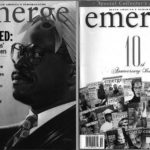LEXINGTON, Va. (AP) _ Washington and Lee University is drawing praise from some and complaints from others after announcing that it will remove Confederate battle flags from a chapel on the Virginia campus where Robert E. Lee is buried.
The Virginia school where the top Confederate general had served as president after the Civil War disclosed plans Tuesday to move the flags. It also said it would continue to study the university’s historical involvement with slavery.
About a dozen black law school students wrote to the university trustees in April demanding that the flags be banished. Those student reached Wednesday said they welcomed the move. But critics said those flags had a rightful place in history and some said they were withdrawing plans to donate Civil War books and Lee memorabilia to the university.
The students had said in their letter that they felt “alienation and discomfort” with what they saw as the trappings of the Confederacy. The Washington and Lee complaints are familiar ones in the South, where former Confederate states have struggled with symbols of the past that some find racist.
One of the law students, 24-year-old student Brandon Hicks, said Wednesday he’s “very excited about the direction that the university is moving in.” The group had vowed civil disobedience if the demands were not met.
“There’s still work to be done but it’s very encouraging that action was taken so swiftly,” added Hicks,
In their April letter, the students also had demanded that the school repudiate Lee. And they had called on the private liberal arts college to end the practice of allowing “neo-Confederates” to march on campus with battle flags during Lee-Jackson Day, a Virginia state holiday that falls on the Friday before Martin Luther King Day.
While it didn’t repudiate Lee, university president Kenneth Ruscio said, the school of about 2,200 students acknowledges that slavery was a “regrettable chapter of our history, and we must confront and try to understand this chapter.”
“These are legitimately complicated matters, and they are often uncomfortable, too,” Ruscio wrote in an email to faculty and students. “I cannot imagine another institution more challenged by the complexity of history while at the same time more capable of illuminating not just our own history but the wider scope of our nation’s.”
Ultimately the school said it would remove the array of eight Confederate battle flags in Lee Chapel, where the Lee family is buried and display original flags from a Civil War museum on a rotating basis.
According to the university’s website, the original battle flags from different Confederate regiments were put on display in Lee Chapel starting in 1930. Experts note there were several styles of Confederate battle flags in addition to a series of Confederate national flag patterns in wartime.
The university also said Tuesday it will continue to allow groups to use the chapel for lectures but won’t let them to “march” on campus or use it to espouse their statements. Ruscio also urged the undergraduate faculty to decide this fall whether to cancel classes on the King holiday.
Student Anjelica Hendricks, 23, said she hopes the move would foster more dialogue on campus and make it a more inclusive place.
“Discussions of race and oppression are uncomfortable topics to be had (but) we risk greater consequences by electing not to have them,” Hendricks added.
But defenders of the Confederacy likened the school’s actions to taking the American flag from Ulysses S. Grant’s tomb.
“The university has lost its credibility and honor and desecrated the grave of an American icon,” said Brandon Dorsey, a commander with the Lexington brigade of the Sons of Confederate Veterans. “If (the students) didn’t want to be offended by Lee’s legacy, they could’ve chosen some place that wasn’t so obviously associated with him.”
Washington and Lee, in the Shenandoah Valley west of Richmond, was founded in 1749 as Augusta Academy and adopted George Washington’s name in 1796. Lee led Confederate forces before surrendering at Appomattox in 1865. He served as the university’s president after the war and Lee became part of the university’s name after his death.









